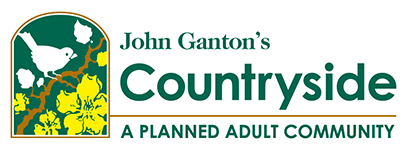Certain decisions deserve a lot of consideration, and where to spend your senior years is definitely one of them. If you’re one of the 71.6 million baby boomers living in the U.S., you may be feeling the pressure to secure your retirement situation now. Luckily, you’ve got lots of options, one of which is assisted living.
Assisted living is a type of retirement community in which seniors can retain their autonomy in private apartments while still receiving help with activities of daily living (ADLs). These situations typically include a number of attractive amenities and services, a built-in community of peers and an individualized plan of care. These benefits make assisted living communities a very popular living style.
One of the major concerns among seniors planning to enter assisted living and similar arrangements is cost. Senior living can be expensive, and it’s essential to make sure that the price matches the care. If you’re struggling to understand the pricing structure, this article will clear things up. Keep reading for a complete cost breakdown of assisted living in Michigan.
At John Ganton’s Countryside, we know that cost is important to our residents and their families, which is why we do our best to offer immense value while maintaining affordability. Questions? Call Margaret Nagel at (517) 206-5000 or download our brochure to learn about our care levels, cost, and amenities.
The Cost of Assisted Living in Michigan
Once only a secret to Michiganders, word is getting out that Michigan strikes the perfect balance between quality of life and cost of living. With the fourth lowest cost of living in the U.S., Michigan sits about 10% below the national average. In addition to affordability, Pure Michigan offers a wealth of natural beauty and ample cultural and historical attractions — features that benefit its senior citizens as much as its younger population.
Average Cost of Assisted Living in Michigan
Senior living is more expensive than conventional housing everywhere, but the average cost of assisted living in Michigan is more affordable than many other states. New data shows that the monthly median cost of assisted living homes in Michigan in 2021 was $4,250 — considerably lower than in other regions of the country.
How Does Michigan Compare to the National Average?
The monthly median cost of assisted living homes in the U.S. in 2021 was $4,500, $250 more than Michigan’s median cost. Conversely, the national monthly median cost of comprehensive nursing home care was less than Michigan’s — $9,034 versus $9,855, respectively.
Cost of Assisted Living in Michigan Metro Areas
As a general rule of thumb, housing is more expensive in metropolitan areas than in rural areas and smaller cities. Michigan is no exception. Here’s a city-by-city breakdown of the median monthly cost of assisted living in 2021:
- Detroit area: $4,215
- Ann Arbor: $6,093
- Grand Rapids: $4,828
- Kalamazoo: $4,350
- Lansing: $4,313
- Flint: $4,375
- Jackson: $4,000
Of the seven metropolitan areas listed, Jackson ranked as the most affordable, more than $200 cheaper per month than the second cheapest metro area. Ann Arbor was the most expensive, more than $1,200 than the second priciest city.
How Assisted Living Homes Charge for Services
Assisted living homes generally offer one of two pricing structures: one all-inclusive monthly fee or a base fee with monthly add-ons. Each structure has its benefits and drawbacks, depending on the arrangement’s particular offerings.
All-Inclusive Assisted Living Pricing
With an all-inclusive pricing structure, all residents within pay the same amount each month, regardless of services they do or do not use. Although some seniors may benefit more from this model, it offers every resident the security of knowing they won’t be charged more if they need additional care one month. Additionally, a set price allows residents and their families to budget more accurately than an add-on pricing style.
Assisted Living Monthly Pricing with Add-Ons
Seniors who don’t anticipate taking advantage of many services and amenities may be drawn to this à la carte system. Although the add-on pricing model is harder to budget for, it may save low-maintenance residents money. It generally works by charging each senior a monthly base fee (which could be considered rent) and then adding on charges based on usage. Potential add-ons could include the following:
- Additional help with ADLs
- Medication management
- Physical or occupational therapy
- Extra meals, parking or special activities
For seniors worried about the costs of assisted living in Michigan, the add-on pricing structure can cause unnecessary financial anxiety. As a result, some seniors prefer to find living arrangements that charge a flat rate.
How Assisted Living Costs Compare to Other Senior Care Costs
Senior care arrangements are not one-size-fits-all. There are many types of long-term care, and they vary widely in offerings and price. Assisted living sits squarely in the middle in terms of both. Here’s how the monthly median price for assisted living in 2021 compared to the cost of other types of senior care in Michigan:
- Homemaker services: $5,529
- Home health aide: $5,529
- Adult day health care: $1,733
- Assisted living: $4,250
- Semi-private room in nursing care home: $9,095
- Private room in nursing care home: $9,855
Assisted living arrangements were the second cheapest type of long-term senior care in 2021, following adult day health care. Additionally, nursing home care (even semi-private rooms) were more than twice as expensive than assisted living homes.
Factors That Affect Assisted Living Costs
The cost of assisted living in Michigan depends on both the quality and quantity of services and amenities provided. For example, assisted living arrangements that include access to highly trained medical professionals tend to be more expensive than those that do not. However, these factors are constant and not the primary drivers of recent pricing inflation.
The COVID-19 Pandemic
In the past two decades, the cost of long-term care across the country has continued to rise. The COVID-19 pandemic has only exacerbated that trend, requiring long-term care providers to spend more on personal protective equipment (PPE), enhanced training and additional safety protocols. However, experts expect pandemic-related costs to dissipate over time.
Aging Baby Boomers
The primary driver of increased cost is supply and demand. The baby boomer generation represents the largest cohort of seniors the U.S. has ever seen. As the number of seniors in need of care increases rapidly, many long-term care homes struggle to retain enough staff to meet the increased number of residents, driving up prices.
Michigan Assisted Living Financing Options
The cost of assisted living in Michigan may be more affordable than in several surrounding states, but that doesn’t mean everyone can afford it. Seniors who can’t afford to finance assisted living out-of-pocket may want to look into the following financing options:
- Michigan Choice Waiver Program, a Medicaid service that covers the cost of some ADLs for eligible applicants
- Long-term care insurance, a type of insurance policy that pays for some senior living arrangements, including select assisted living arrangements
- Area Agencies on Aging, a nonprofit organization that secures federal funding for many types of adult services
If you already have a particular assisted living community in mind, the best way to explore your financing options is to speak with one of their experts. They can connect you with state and local resources and help you find ways to make assisted living affordable.
Reasonable Prices, Unbeatable Care
Some assisted living homes may tell you that a superior level of care and low prices don’t go hand-in-hand, but that’s not true. The residents at John Ganton’s Countryside enjoy high-quality housing, a gorgeous 100-acre campus, an array of services and amenities and impeccable medical care at some of the most affordable prices in the region.
If you’re concerned about the cost of assisted living in Michigan, we encourage you to reach out to the compassionate care professionals at John Ganton’s Countryside. They can review the options available to you, give you tips for securing financial assistance and help make your retirement dreams a reality. Call Margaret Nagel at (517) 206-5000 or download our brochure to learn about our care levels, cost, and amenities.


